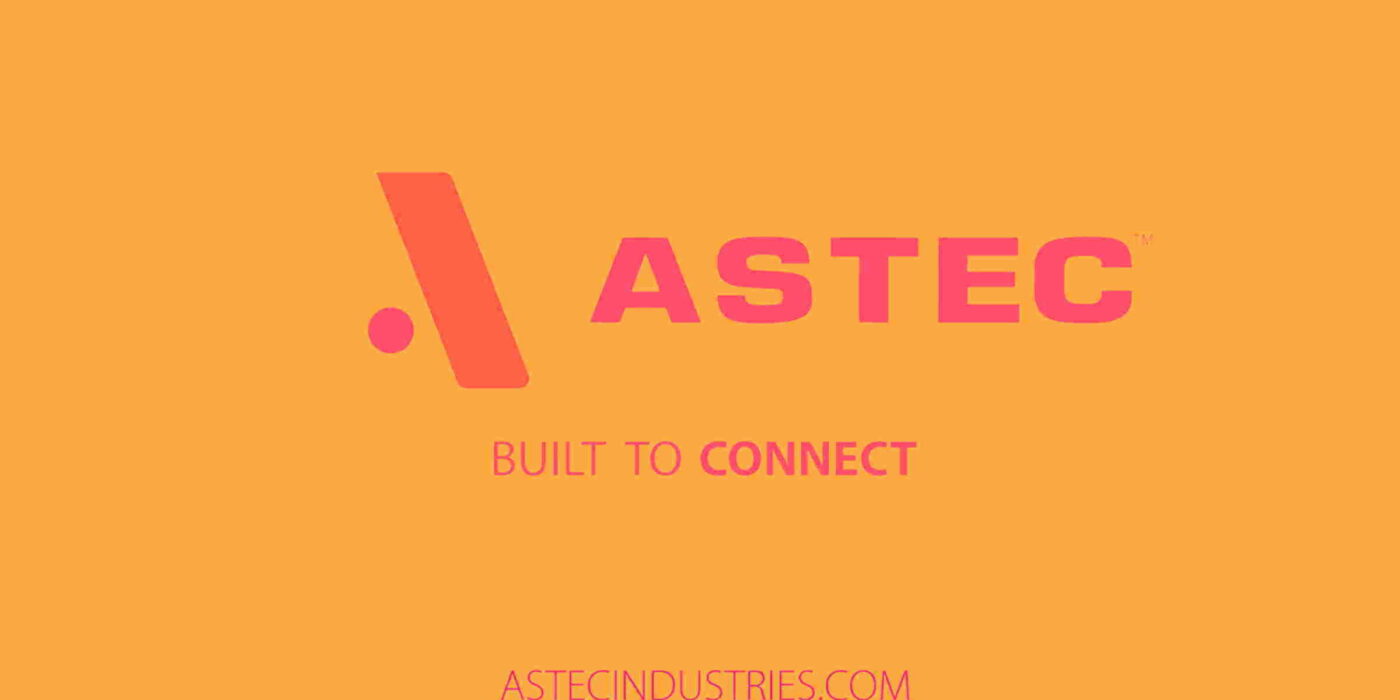Construction equipment company Astec (NASDAQ:ASTE) reported Q2 CY2024 results topping analysts' expectations, with revenue down 1.3% year on year to $345.5 million. It made a non-GAAP profit of $0.61 per share, down from its profit of $0.87 per share in the same quarter last year.
Is now the time to buy Astec? Find out by accessing our full research report, it's free.
Astec (ASTE) Q2 CY2024 Highlights:
- Revenue: $345.5 million vs analyst estimates of $332.4 million (4% beat)
- EPS (non-GAAP): $0.61 vs analyst expectations of $0.70 (12.2% miss)
- Gross Margin (GAAP): 23.5%, in line with the same quarter last year
- EBITDA Margin: 8%, up from 6.7% in the same quarter last year
- Free Cash Flow of $3.3 million is up from -$52.8 million in the previous quarter
- Backlog: $531.1 million at quarter end, down 22.9% year on year
- Market Capitalization: $713.2 million
"We are pleased with the trajectory of our second quarter performance, specifically, the overall 5.9% increase in implied orders in spite of difficult market conditions for our Materials Solutions segment. Our Infrastructure Solutions segment not only experienced an 11.0% increase in sales during the quarter, but also saw a robust increase in implied orders, due to high demand across the construction industry, especially for asphalt and concrete plants. Our Materials Solutions segment experienced a decline in sales, driven by continued finance capacity constraints with contractors and dealers and longer product conversions, but saw positive movement in implied orders," said Jaco van der Merwe, Chief Executive Officer.
Inventing the first ever double-barrel hot-mix asphalt plant, Astec (NASDAQ:ASTE) provides machines and equipment for building roads, processing raw materials, and producing concrete.
Construction Machinery
Automation that increases efficiencies and connected equipment that collects analyzable data have been trending, creating new sales opportunities for construction machinery companies. On the other hand, construction machinery companies are at the whim of economic cycles. Interest rates, for example, can greatly impact the commercial and residential construction that drives demand for these companies’ offerings.
Sales Growth
A company’s long-term performance can indicate its business quality. Any business can put up a good quarter or two, but many enduring ones tend to grow for years. Regrettably, Astec's sales grew at a weak 1.5% compounded annual growth rate over the last five years. This shows it failed to expand in any major way and is a rough starting point for our analysis. 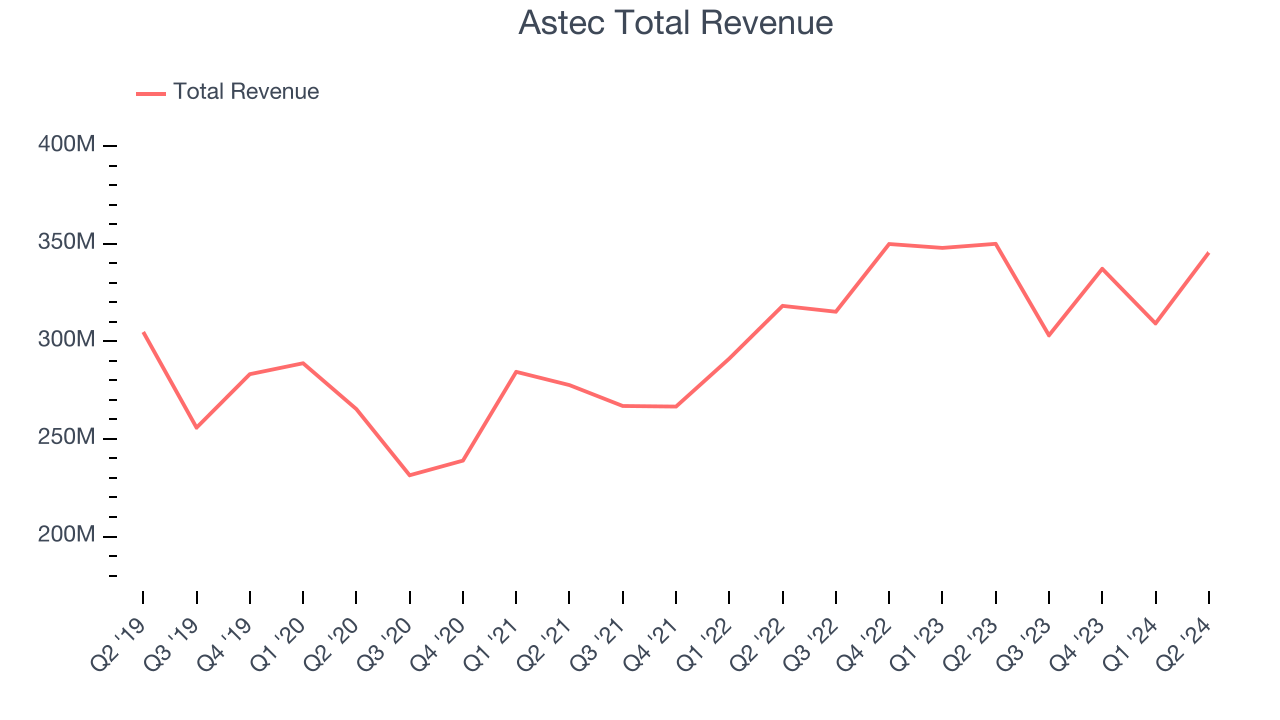
Long-term growth is the most important, but within industrials, a half-decade historical view may miss new industry trends or demand cycles. Astec's annualized revenue growth of 6.4% over the last two years is above its five-year trend, but we were still disappointed by the results.
We can better understand the company's revenue dynamics by analyzing its backlog, or the value of its outstanding orders that have not yet been executed or delivered. Astec's backlog reached $531.1 million in the latest quarter and averaged 9.1% year-on-year declines over the last two years. Because this number is lower than its revenue growth, we can see the company hasn't secured enough new orders to maintain its growth rate in the future. 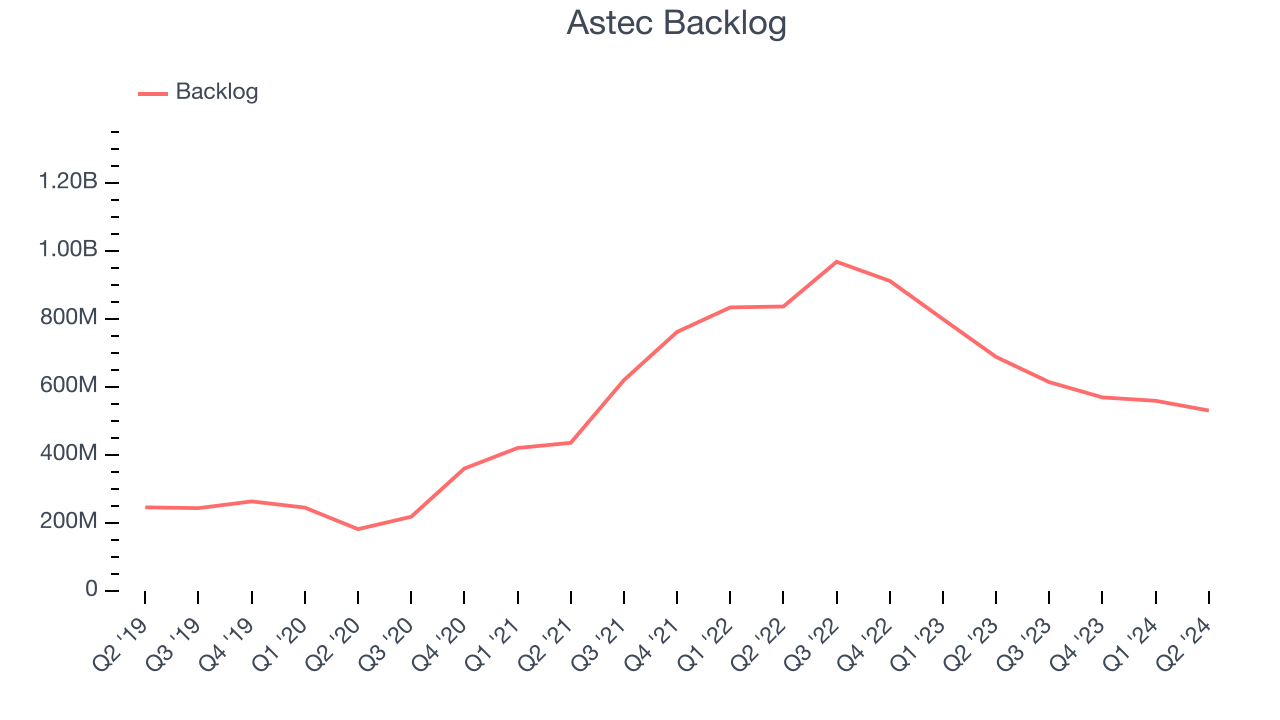
This quarter, Astec's revenue fell 1.3% year on year to $345.5 million but beat Wall Street's estimates by 4%. Looking ahead, Wall Street expects revenue to remain flat over the next 12 months.
When a company has more cash than it knows what to do with, buying back its own shares can make a lot of sense–as long as the price is right. Luckily, we’ve found one, a low-priced stock that is gushing free cash flow AND buying back shares. Click here to claim your Special Free Report on a fallen angel growth story that is already recovering from a setback.
Operating Margin
Operating margin is an important measure of profitability as it shows the portion of revenue left after accounting for all core expenses–everything from the cost of goods sold to advertising and wages. It's also useful for comparing profitability across companies with different levels of debt and tax rates because it excludes interest and taxes.
Astec was profitable over the last five years but held back by its large expense base. It demonstrated inadequate profitability for an industrials business, producing an average operating margin of 1.5%. This result isn't too surprising given its low gross margin as a starting point.
Looking at the trend in its profitability, Astec's annual operating margin might have seen some fluctuations but has remained more or less the same over the last five years, meaning it will take a fundamental shift in the business to change.
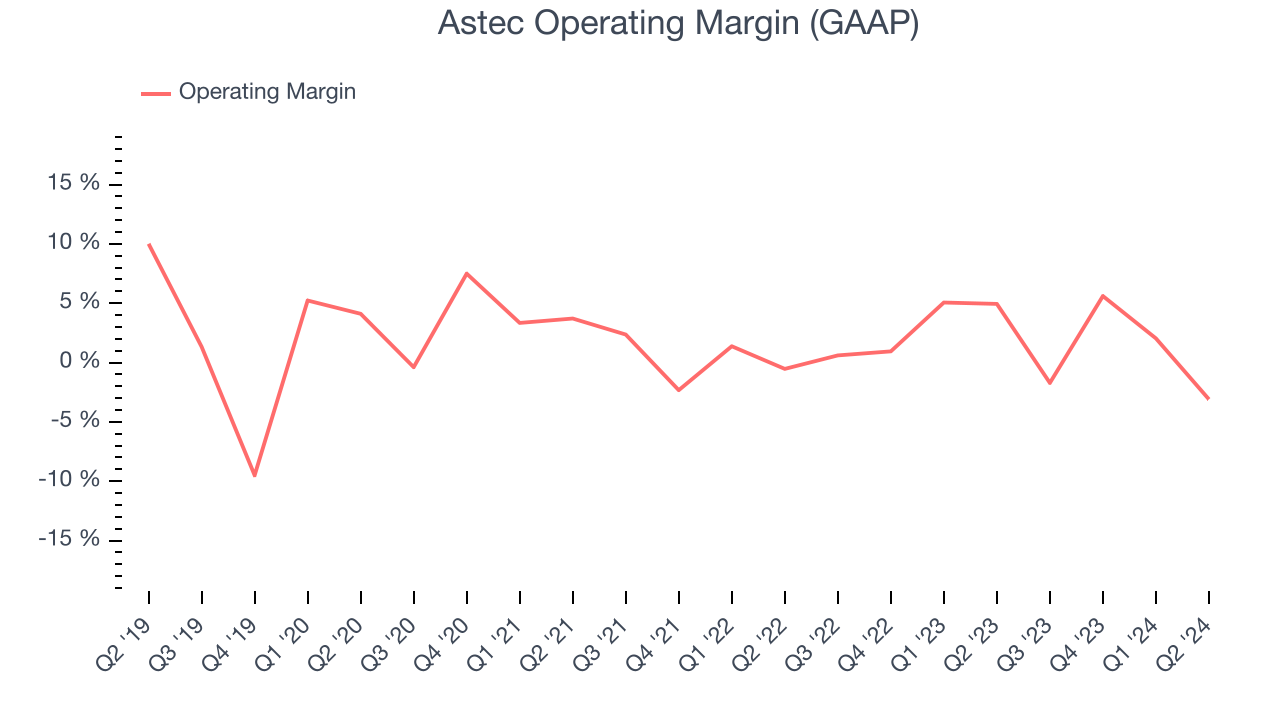
This quarter, Astec generated an operating profit margin of negative 3.1%, down 8 percentage points year on year. Since Astec's operating margin decreased more than its gross margin, we can assume the company was recently less efficient because expenses such as sales, marketing, R&D, and administrative overhead increased.
EPS
We track the long-term growth in earnings per share (EPS) for the same reason as long-term revenue growth. Compared to revenue, however, EPS highlights whether a company's growth was profitable.
Sadly for Astec, its EPS declined by 1% annually over the last five years while its revenue grew by 1.5%. However, its operating margin didn't change during this timeframe, telling us non-fundamental factors affected its ultimate earnings.
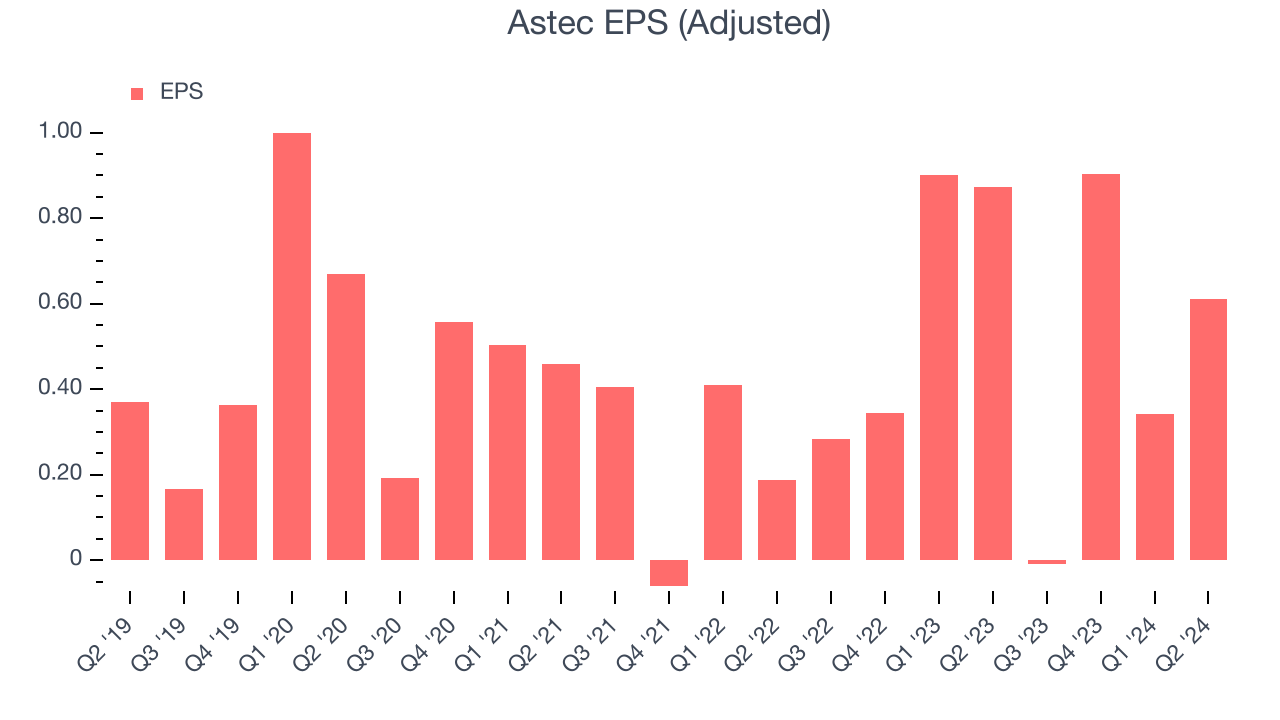
Like with revenue, we also analyze EPS over a more recent period because it can give insight into an emerging theme or development for the business. For Astec, its two-year annual EPS growth of 39.9% was higher than its five-year trend. This acceleration made it one of the faster-growing industrials companies in recent history.
In Q2, Astec reported EPS at $0.61, down from $0.87 in the same quarter last year. This print missed analysts' estimates. Over the next 12 months, Wall Street expects Astec to grow its earnings. Analysts are projecting its EPS of $1.85 in the last year to climb by 40.3% to $2.59.
Key Takeaways from Astec's Q2 Results
We were impressed by how significantly Astec blew past analysts' revenue expectations this quarter. On the other hand, its EPS missed. Overall, this quarter was mixed. The stock remained flat at $31.33 immediately after reporting.
So should you invest in Astec right now? When making that decision, it's important to consider its valuation, business qualities, as well as what has happened in the latest quarter. We cover that in our actionable full research report which you can read here, it's free.
